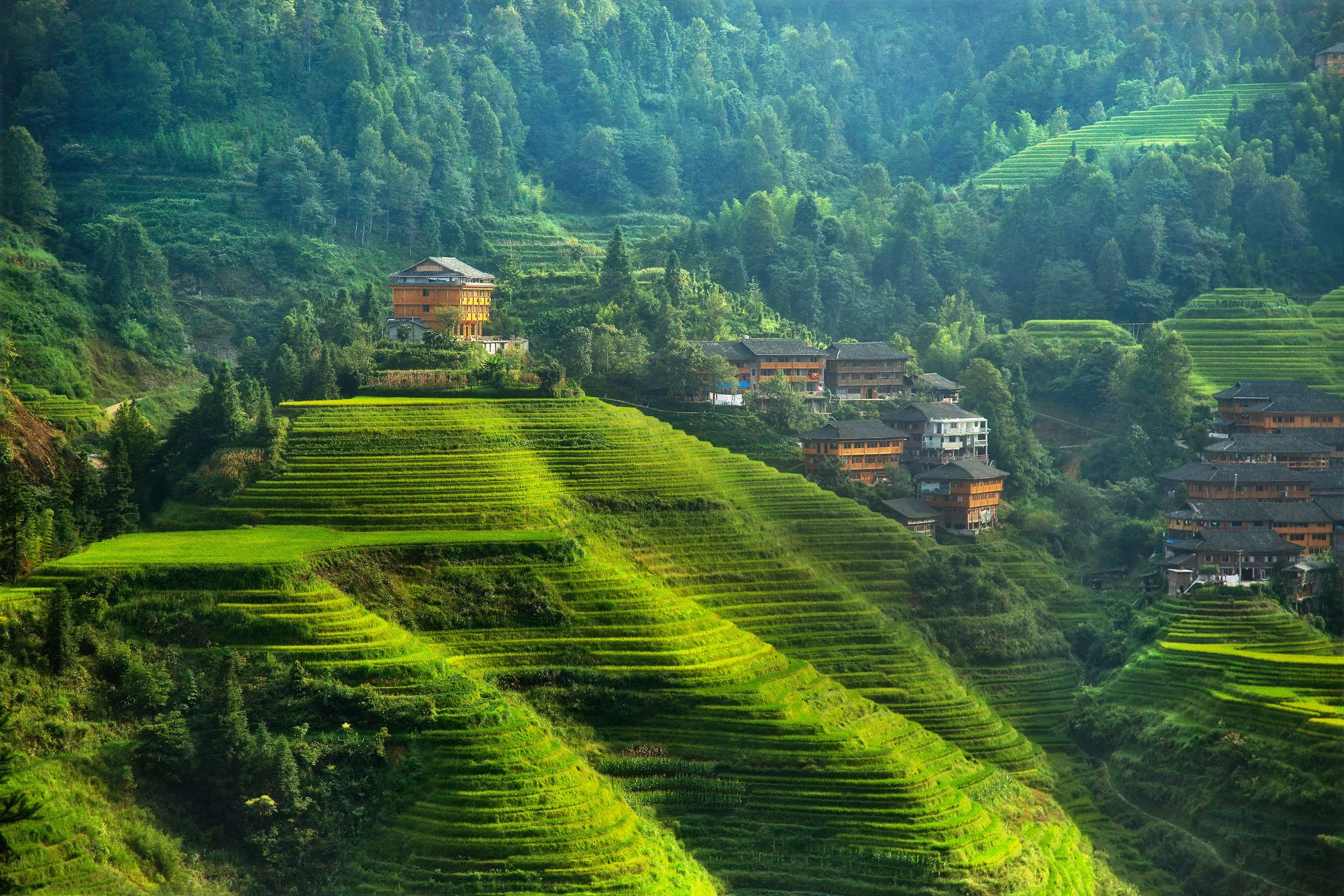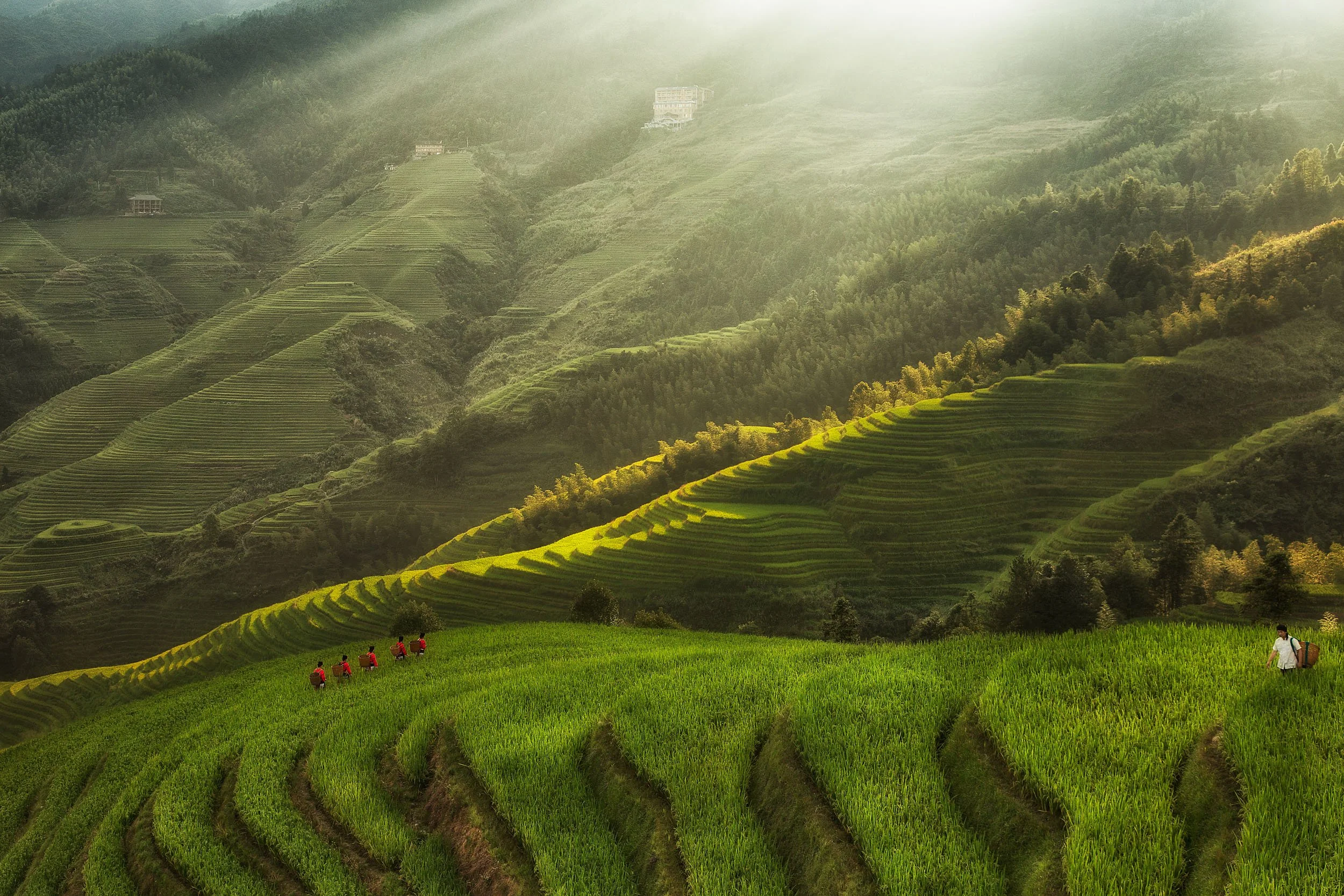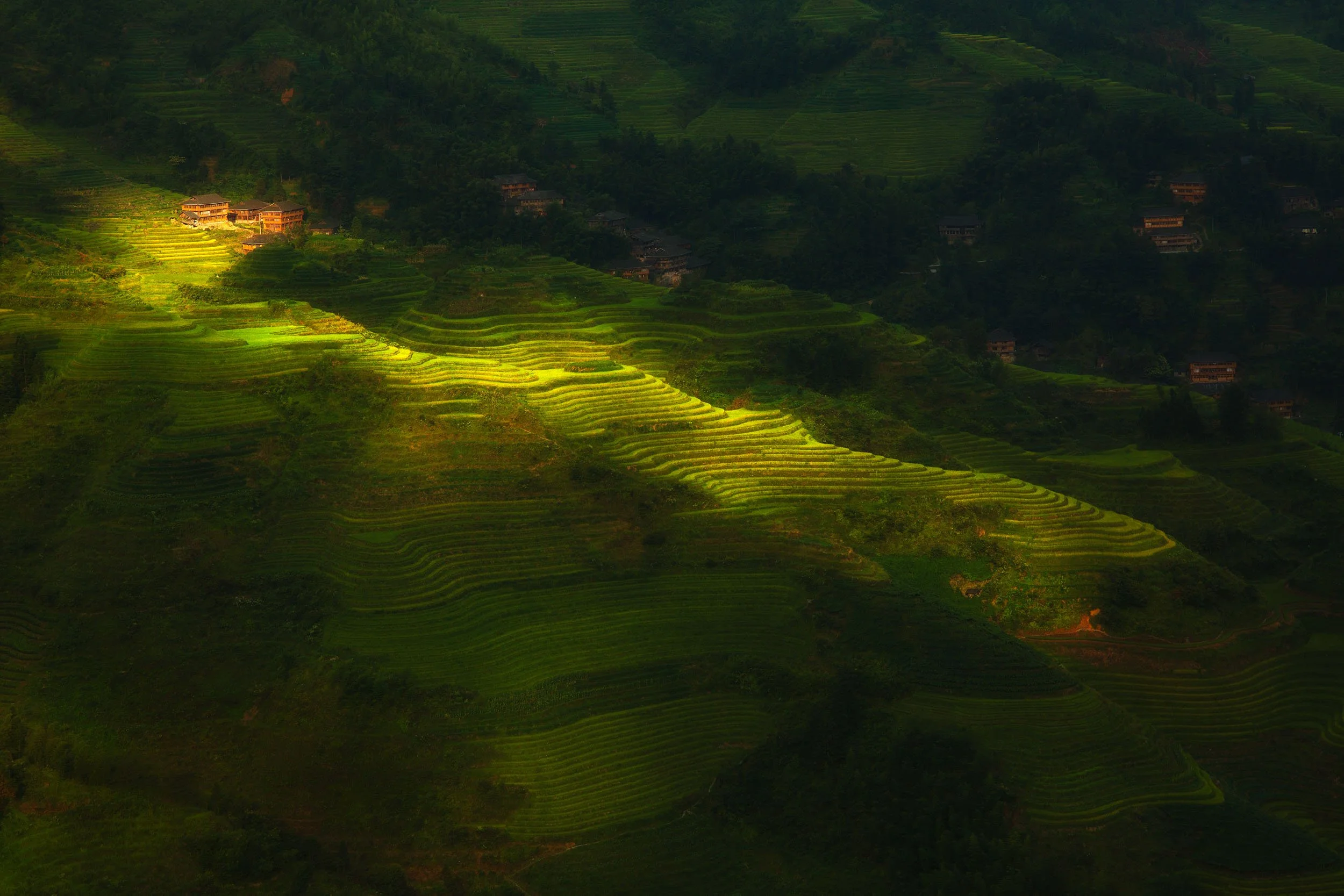Sometimes you have to be a bit lucky with landscape photography. You can try to plan ahead in terms of location, seasonality, weather conditions or even try to predict what the light will be like. However, when five Chinese ladies dressed in traditional clothing walk into your frame, you are simply lucky.
This day I went hiking with a local Chinese guide in the Ping'an and Darzhai Hills. A vast area with kilometers of rice fields in the hills of Longsheng Province, China, also known as Longji or "the dragon's backbone". Chinese farmers have been growing rice in the same way for a few hundred years. This tradition of growing rice is very important to the people in this area. Each family farms a piece of land. The magnitude of their efforts hits you when you walk between these hills. The vastness of the landscape is overwhelming, with every new turn. You start to see differences in color in the rice fields, and the effect of the sunlight on the fields. The time of this photoseries is mid-September. That is when the green plants start to turn yellow, indicating that they are almost ready for harvest. This difference in color can be seen here. The rice in the foreground is green while the rice in the illuminated area has already turned yellow.
The landscape in this area has been changed by man, but at the same time it seems to have been designed with the aim of staying in balance with nature. A guide explained to me that the traditional way of farming is strongly influenced by the philosophy of feng shui, a Chinese philosophy that aims to make individuals live in harmony with their environment. The feng shui master is a person with a great influence in a village on, among other things, the way in which changes should be made to the landscape, as I was told by a villager. The construction of a new road was discouraged by the feng shui master, "it would cut through the Dragon’s backbone".










